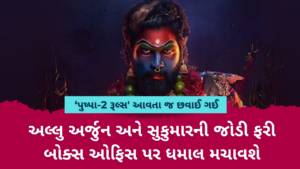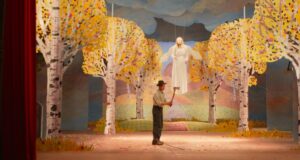This film was screened as part of ‘Twenty First’, an ongoing film festival at Faculty of Fine Arts at MS University.
Date of screening: 6th December, 2013
Director: Abbas Kiarostami
Cast: Hossein Sabzian, Mohsein Makhmalbaf
A friend of mine who had worked as the Executive Producer in an extremely popular reality show about five years ago told me how the crew members would doctor the content only to develop the ‘reality’ in a manner they desire. A contestant, he said, was hinted by a crew member to raise an issue on a particular activity arranged for the day. Then everybody in the production team would wait and watch who’ll flip and react first. Without any such monitoring, he concluded, people would be willing to ‘kill each other’. In a way, the scenario created by the producers for the success of a reality show helps both in keeping things in order and in retaining the level of entertainment – a ‘controlled chaos’.
While the content manipulation in modern reality shows is able to create a unique and surreal experience of entertainment both for the audiences and the cast, it doesn’t help in promoting the good values of understanding, sympathy, forgiveness, atonement and harmony. In fact, apathy, aggression, intolerance, prejudice, enmity and violence are often encouraged in the name of entertainment, with a happy ending reserved for the end only as an excuse for atonement. ‘Misery Loves Family. So rip each other’s throats while you all stay together! You can apologize to one another later’ is what’s implied in the participants’ contracts, and these people are hungry enough for money and fame to happily do what they’re told. I wonder if they learn anything at the end of their stint after pretty much exhausting their energies in bringing each other down.
Back in 1990, Abbas Kiarostami, one of the leading figures in the Iranian New Wave movement that took over Persia in the late 60s, created an unique and surreal experience called ‘Nema-Ye Nazdik’, which means ‘Close Up’ in English. In many of his films, the director would bring people to reenact certain events from their own lives albeit as Kiarostami picturises them. He would allow them to express themselves, but he would also auto-tune their experiences to make it viable enough for cinema. In a way, it’s an alternative existence for these men and women in Kiarostami’s universe. It’s a very brave thing to revisit and reexamine chapters from our lives, but it can also be a very rewarding one. A film like Close Up helped in altering not just the audiences’ attitude towards the protagonist, who is condemned in the beginning as a fraudster, but also the victims’, who not only forgave his mistakes but also acted together with him. What are the chances you would agree to act in a film which asks you to play a scene from your life where you were the victim, that too opposite the same guy who defrauded you? That Kiarostami manages to hold them back from ripping the man’s throat out is an achievement in itself.
I saw this film during my second day at the Fest Twenty First film festival at Faculty of Fine Arts, MS University. Missing the opening twenty-five minutes, I had no idea whether to take the film as a documentary or a fiction. The courtroom scenes were shot in a documentary style, and the camera movements remained sparse throughout, but then the film involved flashback sequences featuring the same actors, and I assumed it was fiction. The dialogues and behavior projected by the cast during the courtroom scenes were a giveaway. The unusual restraint and control of the facial expressions and the eloquence of dialogues lacked the spontaneity of real life. But I also was aware that Kiarostami was standing in one corner shooting the entire event, and I thought this could’ve been one reason why everybody was so intent on hearing the entire story from the defendant’s point of view. And every non-actor has certain self-consciousness while speaking in front of the camera, which was observable during the courtroom scenes.
My doubts were resolved only after perusing critic Godfrey Cheshish’s lengthy but revelatory essay on Close-Up. He writes ‘If Sabzian (the accused) is deceptive, Close-Up, it turns out, is even more so. Very few scenes in the film that appear to be documentary actually are. The trial scenes, in fact, are elaborate fakes… Kiarostami himself orchestrated what happened in the courtroom, including the family’s forgiveness (they actually wanted Sabzian to be locked up). Kiarostami also scripted much of Sabzian’s testimony…much taken from things actually said by Sabzian whose speech really is clogged with literary references, mystical aphorisms and cinephilic jargon’. Kiarostami aimed to study human character and motivations in depth using the camera, but much of the material he required could’ve only been obtained by his ‘divine’ intervention.
His subject, Hossein Sabzian, is a curious case. An unemployed print-worker living with his mother, Sabzian has little money to even satisfy his basic needs. In an interview, Kiarostami calls him one of the ‘homework kids’, who received the same education as most others in the country and did not amount to anything great in life (note the veiled attack on the education system). He is highly interested in the arts, especially films, and can passionately talk at length about directors he admires. Unfortunately, he is deprived of funds to make a film and he does little to mitigate his suffering and ‘follow his dreams’. One afternoon, while on a bus, an old lady sitting beside him asks him about the book in his hand. He’s reading The Cyclist, a novel by Iranian director-writer Mohsen Makhmalbaf, whom he admires greatly. He insists the lady, Mrs. Ahankhah, to take the book with her; he’s more than eager to increase people’s appreciation of the arts. Out of the blue, he says that the book was written by him. One lie wouldn’t do much harm, but it ultimately leads to a lengthy act of deception lasting over weeks after Sabzian lies to Mrs. Ahankhah that he, as Makhmalbaf, is planning to shoot his next picture ‘House of the Spider’ and that he’s looking for a cast; the woman tells him about her sons Mehrdad and Monoochehr, whom he agrees to use as actors. It’s startling to see the poised beguiling improvisatory audacity while he’s speaking to the woman; even accomplished method actors and spinner of yarns would be envied by his elaborate act. He has a natural advantage of looking like the director, which he is aware of, and he uses it to aid his performance. In the courtroom scene, when he is asked by Kiarostami whether he thinks he’s a better actor or director, he picks actor and he has quite a resume to prove it!
The discovery of his trickery and subsequent arrest is captured really well. Kiarostami and his cast are successful in delicately handling the complexities of the scene with little movement. First, we wait for Sabzian to arrive as Mr. Ahankhah, the head of the household speaks with his journalist friend in the living area about how he was able to find out about his fraud. He then walks up to the window as watches as Sabzian arrives. After an uncomfortable talk with Sabzian, Ahankhah leaves the scene and gets out of the house. It is Sabzian who walks up to the window to watch nervously as Ahankhah returns accompanied by two officers. Once Sabzian is escorted out, the journalist walks up to the same position and watches the man being taken in the car. The scene then dissolves back to the courtroom. A conventional movie today would’ve loaded this particular scene with gazillion unnecessary cuts to ‘maintain continuity’; here, what Kiaslowski simply does is far more effective as the long cuts allows us to think for ourselves how it must’ve been for each character at that particular moment. A number of modern directors and editors sadly do not realize the power of ‘cutting’ in film and use it recklessly.
Sabzian appeals to the court to reprieve him on moral grounds, and begs the entire Ahankhah family for forgiveness, adding that he never had any malicious intentions in mind. His only guilt, he says, is that he couldn’t repay the 1900 toman he had borrowed from them. He apologizes for not being able to make the film, something he really desired if he had the money. It takes time for the Ahankhas to believe his repentance, as he’s betrayed their trust to a great extent already, and they suggest he might still be acting to escape from punishment. Finally, when they agree to withdraw their complaint and Sabzian is set free, he gets to meet the real Makhmalbaf. This, as Godfrey tells, was ‘preplanned by Kiarostami’, and so were the sound problems which Kiarostami faced while capturing their meeting, which was done only to introduce the soundtrack of Kiarostami’s first feature ‘The Traveler’.
Visually, the film doesn’t boast of any notable achievements; I saw Akira Kurosawa’s ‘Dreams’ the next day and was stunned by the captivating visuals of certain sequences. Yet, Kiarostami’s Close Up is quite a daring attempt to examine the impact of cinema on viewers. He has said during an interview “With the help of dreams you can escape from the worst prisons. Actually, you can only imprison the body but dreams flee the walls and without visas or dollars can travel anywhere. In dreams, you can sleep with anyone you want. Nobody can touch your dreams. In a way dreams exactly embody the concept of freedom. They free you of all constraints. I think God gave human beings this possibility to apologize for all the limitations he’s created for them”. He considers cinema as a vehicle of dreams, and while he remarks that ‘We can never get close to the truth except through lying’, he emphasizes on truth, which he says isn’t given but created through will and intent. In the end, each viewer shall find Close Up to be an ultimately rewarding experience, learning something about themselves from Hossein Sabzian.





